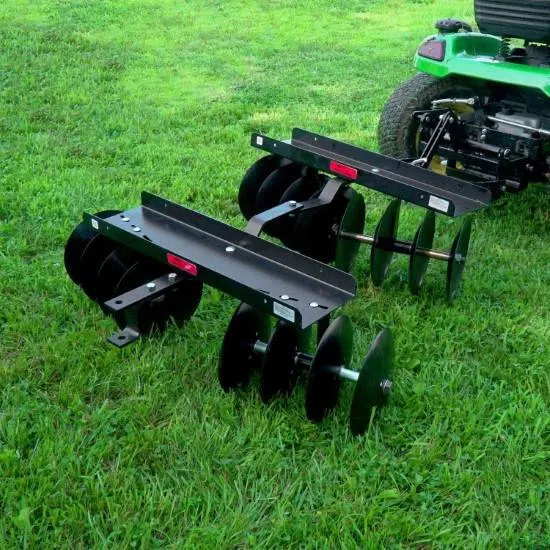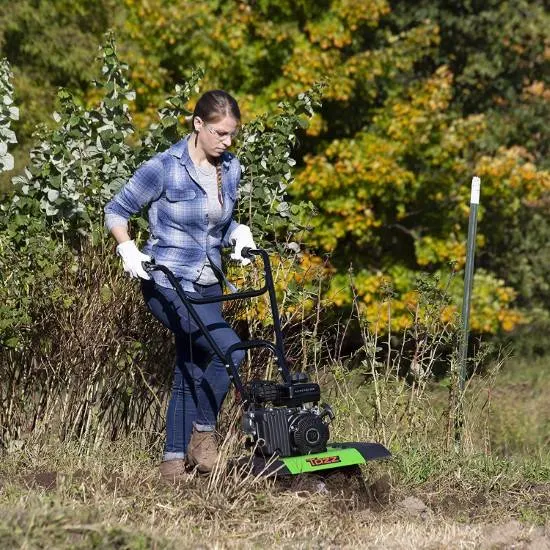What is a Cultivator?
It is a type of machinery used to cultivate and till the land. Typically, it comes in different models, ranging from the small cultivation on deep to topsoil tilling.
They are used to spare the crops and rip the weeds during the growing period. On the other hand, you can use them for cultivating the whole surface of the soil to prepare the beds for planting and remove plant life.

Some of the heavy-duty cultivators are hooked from the tractors, and there are small garden tools that fit the garden beds. Typically, they differ from the harrows in that they till the soil according to pattern done to spare the crop roots while tilling weeds. The harrow disturbs the entire surface of the ground.
You will get the simple hand cultivators, which are human-powered, pulled behind by a tractor or animal, or run on electricity or gas. This means they come in different tools, which you can choose.
Types Of Cultivators
1. Spring tine cultivator
This cultivator has the heavy-duty springs and reversible shovels that prevent the tines of the cultivator from breaking if it hit a hard object. It is recommended on wet or dry soil.
2. Rigid tine cultivator
It has shovels and U-clamp that make it adaptable for many gardening jobs. Its function is to aerate and loosen the soil and prepare the garden beds. Typically, it works best on hard surfaces.
3. Bar point cultivator
This cultivator is best for cultivating heavier or lighter soils. It is mounted on the frames with the clamps and the bar point, sharing at the cultivator tines’ end. It is used when on a tractor.

4. Rigid tine shovel type cultivator
It is the most well-known cultivator in an agricultural operation. It is designed for large fields and heavier landscaping jobs. It is recommended for various activities, like aerating and loosening the soil, preparing the garden beds, and weeding and cultivation.
How To Use The Cultivator
- Make sure you are ready to operate the cultivator. If necessary, wear protective equipment like work gloves, goggles, and weather protection clothes. This prevents the hands from being hurt by small debris, flying to you or getting blisters.
- Check the land before using a cultivator. Remove every debris, like large wood or rocks, before you start. Also, check tines, refuel the motor, and adjust width and depth to suit your needs and field size.
- Set up and assemble the cultivator as per the desired options. Before cultivating or tilling the soil, create rows of seeds by pushing the cultivator in the straight line.
- Use the chopping option to dig and turn the soil according to the lines drawn earlier. Break up all clods and lumps and remove heavy debris such as stones. Repeat until you have soft and shallow trenches that are suitable for planting.
- Continue operating the cultivator by avoiding excessive pressure or force if the machine cannot withstand the hardness of the soil. As an alternative, start progressively with the shallow depth as you increase it when loosening the soil layers.
- Maintain a constant speed and firm grip. Avoid going for the hardest or fastest power immediately because it can lead to a loss of stability.
Uses of the Cultivator
Prepare and improve the soil
Over time, weather conditions or foot traffic compact the soil, making it difficult to grow plants and obtain air and water to survive. A cultivator has enough power to loosen the ground when preparing for planting.
With disks and tines, they can break down lumps into small pieces. In this way, the plants receive more water and air and drain efficiently. In addition, it helps to mix the soil with other components like compost, potting mixes, fertilizers, and manure.
To control weed
A cultivator can help to control weeds effectively. The tines loosen the soil and the weeds. In this way, it is much easier to remove weeds and keep them out, even incorporating weeds in planting rows, which return nutrients to the soil.
Build and plough rows
If you want to use a cultivator to build and plough rows, you need wedge-shaped blades instead of tines. Using these special blades, they create the furrows designed to accept all the seeds. After planting, you may cover the trench with soil, which will facilitate the entire planting process.
Benefits Of Using the Cultivator
1. Save time and money
Manual soil preparation is a tiresome task that requires a lot of energy and time. A cultivator is paramount because it will save you time and money in the long run.
It will make things go quickly and make you will focus on planting. The time saved can be used to do other things, like gardening activities to earn money.
2. Convenient and easy to use
Many people are afraid that the cultivator can be challenging to handle. When you compare it to tillers or other hand tools, you will be amazed at how easy it can be to work with.
They have the adjustable control to work at different soil depths and sized fields. In addition, they are light enough to maneuver and push.
3. Quality tillage work
Cultivators are not as powerful as tillers, but they can prepare and tile the land efficiently when planting. With its many uses and versatility, you get more of it. You will get work done more effectively with better results than doing it manually.
4. Easy and lightweight to store
Another thing, which makes a cultivator more beneficial than the tiller is its size. It is slightly lighter and smaller than the tiller, making it easy to use without much effort. In addition, its size facilitates easy storage.
5. Less expensive
Nevertheless, it depends on the quality of the soil and the power needed for the garden. If you compare with a tiller, a cultivator is cost effective and can carry out quality work without the high price.
If you have a medium-sized garden with less tough soil, a cultivator has cheaper options, which do the job perfectly.
Where To Buy a Cultivator
If you want to buy a cultivator suitable for a vegetable garden and other smaller plots, you can buy it at any store, which sells the garden equipment.
Your local department store may have them in stock, but you can probably find the best deal online. This is especially true if the local store does not have a specific model or brand you want to buy.

Larger cultivators that require to be pulled by a tractor need a specialist store. It usually comes from the same tractor dealer, as many tractor brands have exclusive links you can use to buy from the same brand.
Also, if you need to hire a cultivator, the local equipment stores become the best place to look. Likewise, you can look at the farm and garden store to see if there are rental options.
Conclusion
Cultivators are helpful garden tools, which many people require. Even if they are not as intense and robust as the tillers, they are suitable for medium-sized garden beds.
In this way, you can use them for cultivating the soil to prepare for planting correctly. When choosing the best cultivator, you need to ensure it is durable to make the job done well.
